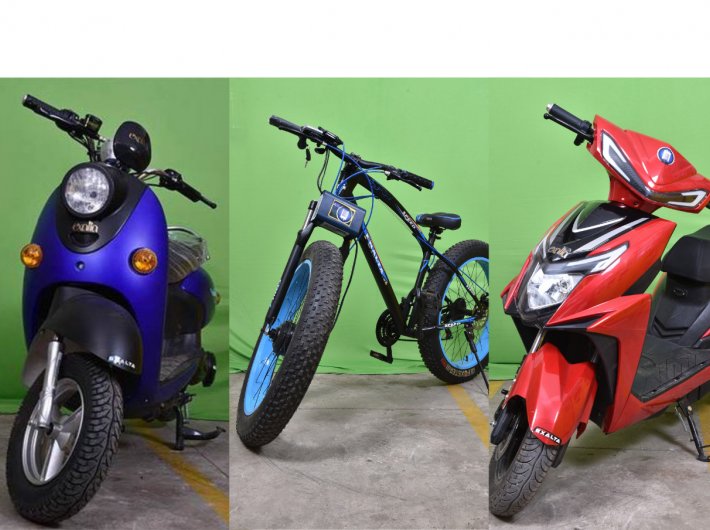Centre, states offer subsidies and incentives, still there might be obstacles on the road ahead
With multiple big-brand vehicles outsourcing parts of their production to India, and many others putting up assembly-line factories in India, it is no surprise that India is on its way to becoming a known name in the automobile industry.
Keeping pace with the global shift towards electric vehicles, in 2013, India had put together a board that focused primarily on the Indian automobile manufacturing sectors. In 2015 a scheme aptly named ‘FAME’ (Faster Adoption and Manufacturing of Electric Vehicles in India) was launched with the primary focus of supporting and encouraging the Indian automobile industry to develop and manufacture eco-friendly, hybrid and electric vehicles.
The automobile mission plan has benchmarked 2026 as the year India becomes one of the automobile industry's leaders. India will hope to achieve its target by engineering, manufacturing, and exporting vehicles and automobile components, especially eco-friendly hybrids and electric vehicles (EVs). The projected growth in exports and the development of EVs will help India improve its GDP by over 12% and provide employment to over 60 million Indians across different fields and states.
Drafting its plans for the next decade, the government has targeted 2030 as the year by which India becomes an entirely EV-based country. The rush to achieve the target has multiple reasons: the increasing levels of air pollution, the growing awareness of the global climate crisis, the colossal cost to the government on crude oil imports and India's growing need to become as Atmanirbhar as possible. Nationwide adoption of electric and hybrid vehicles can help the country tackle all these challeges and many more. However, along with this transition, the government needs to consider many other details to be set into motion to achieve its dream of being a 100% electric vehicle-based country.
In particular, a significant problem in India could be the range an EV can cover in one full charge. India is a large country, with many people electing to drive between cities and different destinations. To ensure an EV can cover the considerable distance between cities, the government is also setting up multiple charging points on highways and expressways. While there are intra-city charging points, they are not enough to spread across all parts of cities, making the charging of an EV on the road a significant drawback for the owners. The government is already focused on getting as many functional charging stations ready and situated across cities to encourage more people to invest in electric vehicles. Another option is battery exchanging stations on major motorways across the country. These will allow the vehicle owners to save time while they drive between cities.
The cost of an EV and the difference in obtaining insurance for an EV does hinder the switch from a regular gas-run vehicle to a hybrid or EV. Still, the government has listed many benefits for those citizens who switch to an EV.
Certain states have announced intentions to provide incentives, like EVs will be exempted from paying a road tax and need not to pay vehicle registration charges. The Maharashtra government wants to achieve a minimum of 10% vehicles in the state as EVs and is offering multiple benefits to the suppliers and buyers. The state wants to shift up to 15% of its city buses to EVs and has set a target of having over 15,000 charging points in Mumbai alone. It hopes to achieve this by 2025 and is willing to offer maximum benefit for those opting for an electric bike. To ensure the expected rise in demand is met, Maharastra is setting up a one-gigawatt battery manufacturing unit. The state has also committed to giving a scrapping incentive for older oil-run vehicles.
E-cycles, E-scooties and E-rickshaws have already become part of the Indian road fabric. Electric two-wheeler growth is expected to reach 25-35% and e-three-wheelers to 65-75% by 2030. The Gujarat government offers subsidy for any new electric two-wheeler, three-wheeler, and four-wheeler vehicles. Moreover, the state has committed to providing a demand incentive of Rs 10,000 per Kilowatt, above all the central government's incentives. It has also announced a cap on the selling price of all ex-factory vehicles that fall under the EV category.
The growing demand and the added incentives have resulted in multiple Indian start-ups and companies shifting their focus to producing more electric-based vehicles, primarily two-wheelers. In addition, big brands in the EV sector are keen on entering the Indian market with vehicles suited for Indian roads and driving habits.
With the tremendous interest and investors keen on investing in India's EV movement and the governments aids offered to those buying and selling EVs, the future of EVs in India looks positive. The country may manage to get a majority of its population to shift to a sustainable, eco-friendly mode of transport by 2030.
Ashutosh Verma is Founder, Exalta India.
